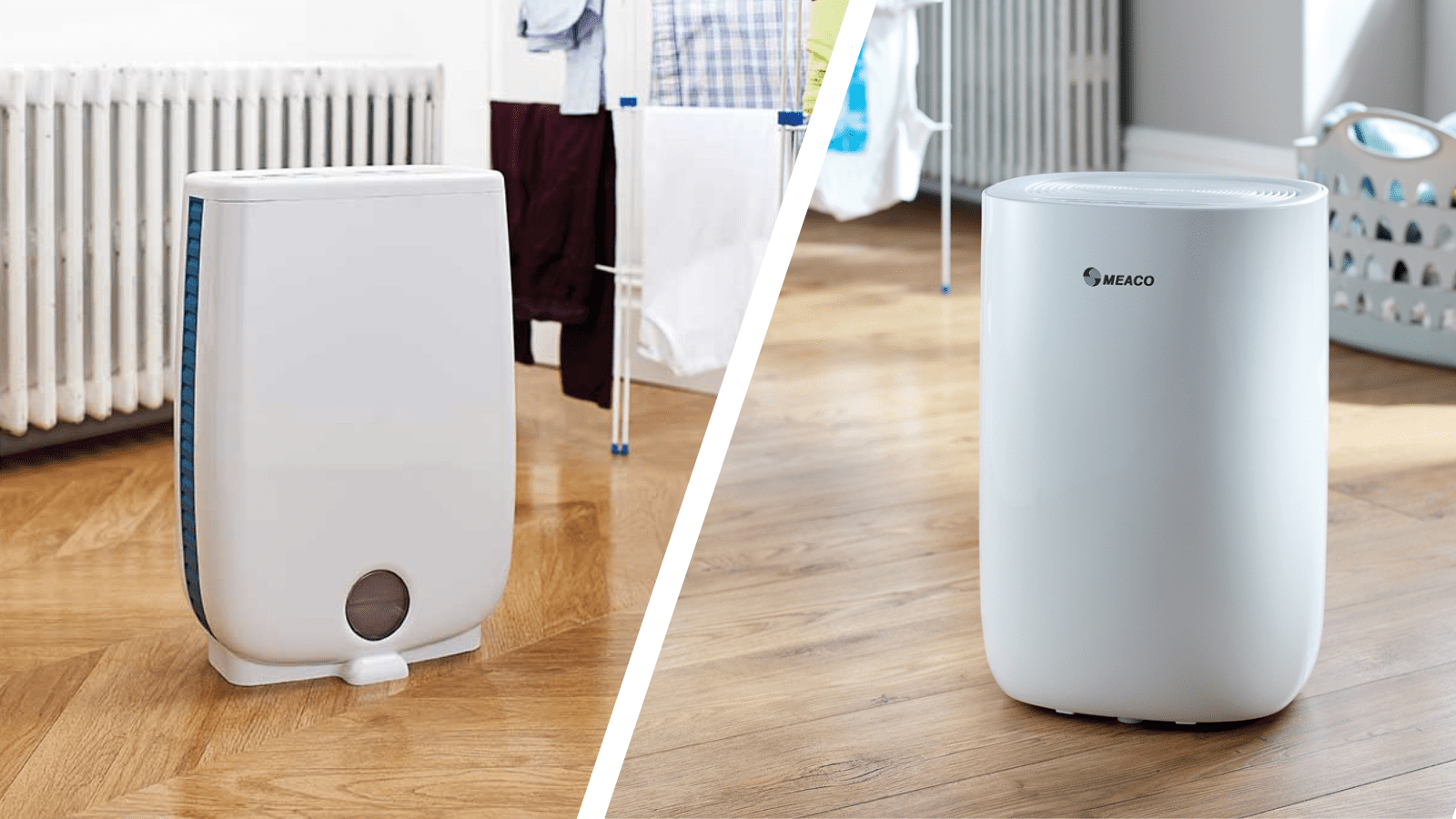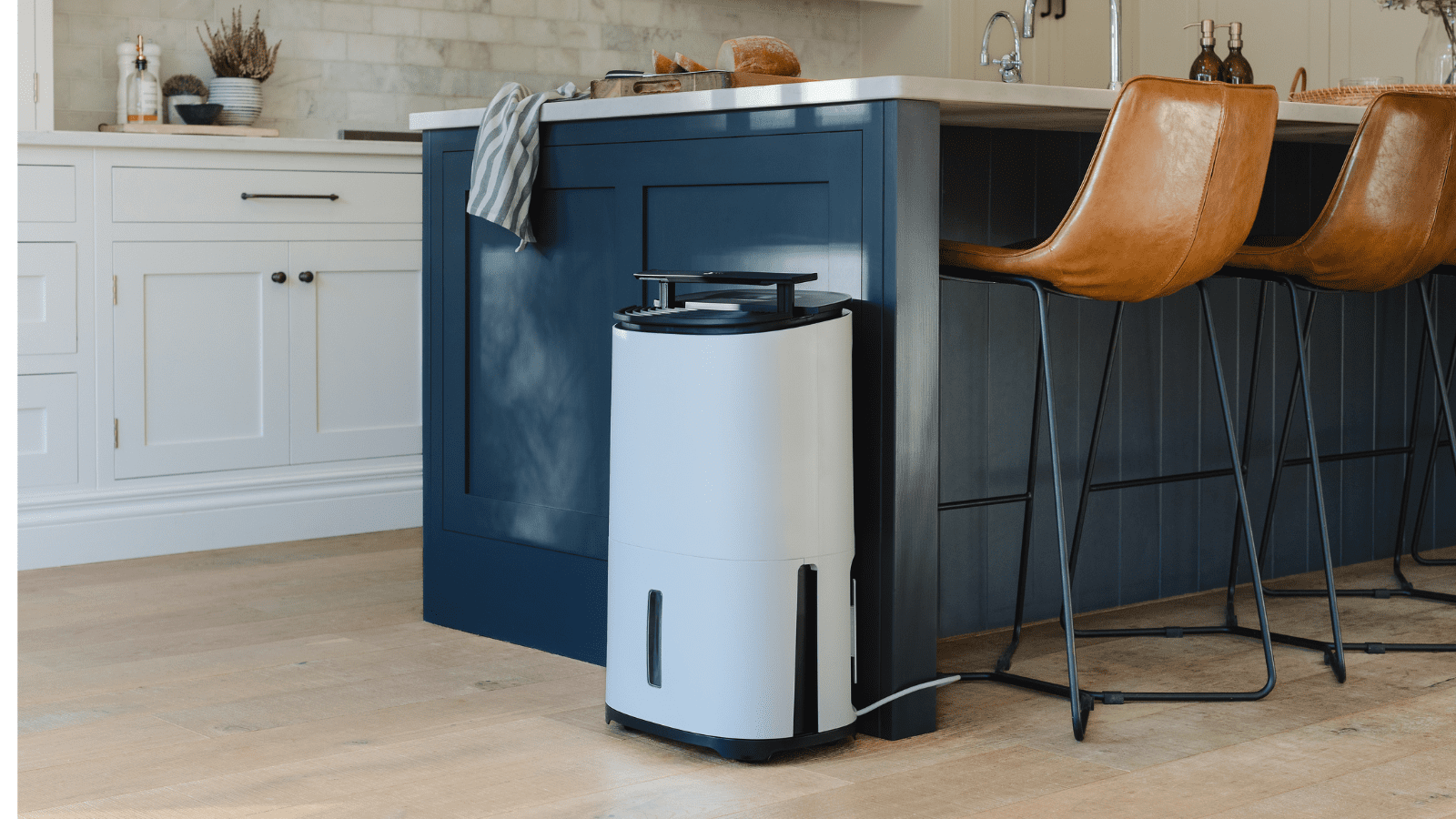One of the most common questions we get on the telephone involves those customers who have bought some type of relative humidity meter and are using it to check on the dehumidifier’s performance. The perceived disparity between the performance of the dehumidifier and the readings on the meter then raise one of two questions. “Why is it still running” or “Why is it not running?”
A dehumidifier has a humidistat which means that it should run until it gets to the target relative humidity and then it should stop dehumidifying and only turn itself back on when the relative humidity goes back up.
This would be the same as a thermostat on a radiator turning the radiator off and on as the temperature goes up and down.
So customers quite rightly have it in their head that their dehumidifier will turn off and on at some point.
Measuring relative humidity is not as simple as measuring temperature.
Measuring relative humidity has never been as simple as measuring temperature, for as long as I can remember it has been quite straight forward, for not a huge amount of money, to measure temperature to within 0.5°C or better and for the thermometer to remain stable for several years.
Relative humidity sensors on the other hand tend to struggle to measure to much better than plus or minus 5%rh in the first place and are susceptible to drift over time. There a couple of points there to be taken on board before we go any further. Firstly why do I write about plus or minus a percentage? When you look at a reading on a relative humidity meter it might say 45%rh, but this does not mean that it is 45%rh, it means that if the meters accuracy is +/-5%rh then the relative humidity is somewhere between 40 and 50%rh. So to understand what a meter is telling us we need to know its accuracy which will always be stated as +/- a number.
I also mentioned drift; this is best understood if you think about your watch. You will accept that your watch might be a bit fast or a bit slow, this would relate to its accuracy. But over time does your watch lose 3 minutes a year, or maybe gains 10 minutes a year? This movement and potential lose of accuracy every year is its drift, something that relative humidity meters suffer from.
When the relative humidity meter leaves the factory it will be set up to read accurately within it’s specification but over time it will drift away from this, usually at a rate of 2-5%rh per year. Manufacturers will expect users to either calibrate their humidity yearly (calibration means to reset the device against a trusted standard, but like setting your watch against the speaking clock) or replace them every few years. But if we are honest with ourselves domestic users will do neither.
So now we have a combination of accuracy and the band that this creates and drift over time, you can start to see now why measuring relative humidity has been described as a black art!
To be honest unless you have paid under around £70.00 for your humidity meter then you probably have something that is cheap and cheerful and at best is just a wet and dry guide. When I talk about £70.00 I mean for the humidity meter alone and not one of these weather stations that are quite popular these days. To compound the problem most meters below this price will have an accuracy of +/-5%rh in the mid range moving to +/- 7%rh below 30%rh and above 70%rh, all of which increases our margin of error when we look at the screen.
That is the meter dealt with, next we have its environment.
We call these measurements relative humidity because they are relative in this case to temperature. If you are measuring the relative humidity in a room at 22°C and 50%rh and forgetting the influence of a dehumidifier or any other outside interference from a humidifier or humans etc if the temperature drops to 21°C then the relative humidity will rise to 53%rh on it’s own. If we were at the extremes of relative humidity at the top or bottom of the scale then the relative humidity would move by 5 or 7%rh with every movement of 1°C. The movement is always inverse, as temperature increases then relative humidity falls and so on.
This is why it is important not to put your humidity meter, or your dehumidifier for that matter, in front of a heat source like a radiator or a window. So if you have your humidity meter on one side of the room and your dehumidifier on the other side of the room then they could be reading different humidities just because of where they are. Add in factors like drafts, humans beings close by (we give off heat and moisture, trying blowing on your humidity meter and see what happens), moisture from sinks, bathrooms, drying laundry etc and you can see that there are several factors that can influence a relative humidity reading.
You could put the humidity meter above the dehumidifier but that is a bad idea too. The air coming out of the dehumidifier is warm and dry, especially on desiccant dehumidifiers, and this too would give a false reading. The air above a dehumidifier like the Meaco DD8L for example is about 10°C warmer than room temperature and very dry, so anything in its air flow will read the wrong reading.
Speed of reaction is another problem, the dehumidifier has its fan drawing air across it sensor to help it measure the latest room reading and spot fluctuations, the humidity meter does not benefit from this and might be suffering from a lack of airflow over its sensor. It might also be quite slow to react or only measure in steps of 5%rh. Trying blowing over the sensor, how quickly does it react and how long does it take it to settle back down. If you run it through this cycle a few times does it settle back down to the original reading?
How does a dehumidifier actually measure the room conditions?
So how does the dehumidifier measure the room conditions? Dehumidifiers have small electronic sensors behind the filter where the air comes into the dehumidifier from the room. This is the best and most sensible place for them to sample the air. Quite deliberately dehumidifiers do not try and be any more accurate than +/-5%rh because they do not want to be turning themselves on and off too frequently if the relative humidity is hovering around the target relative humidity. Avoiding this sort of on/off/on/off control makes the dehumidifier last longer.
As long as the filter is kept clean then the dehumidifier will give you a reliable room reading.
So now we have to add in the accuracy of the dehumidifier, whether the filter is clean, the accuracy of the humidity meter, the drift over time of the two different sensors, their relative positions and the relative conditions within the room.
So as I say to customers when they call, it is not such a straight forward answer to what seems like a simple question!
Products featured: Dehumidifier








54 Responses
Hello!
I just bought the arete one 20L for a one bedroom attic flat.
I have popped it in the kitchen and it has a relative humidity of 52 so it’s turned off pretty quickly.
I got it because my HomePod minis have a humidity sensor and I have one in the living room and one in the bedroom (either side of the kitchen) and they said the relative humidity of these rooms was nearly 70.
Do I need to leave it where it is for a few weeks to bring down the humidity of the whole flat or do I need to put it in the living room or bedroom to improve those rooms?
Obviously the sensor on the HomePod minis might not be nearly as good as the dehumidifier but it does feel damp in the bedroom (bed linen and clothes as I have an open wardrobe).
Many thanks
Ky,
Thank you for your recent purchase. This is standard for dehumidifiers, when the air is flowing they will give a more accurate reading than a room hygrometer because of the benefit of the airflow, readings are always +/-5%.
The time necessary for the dehumidifier to dry a room and reach the desired relative humidity depends on the environmental conditions prevailing within the room. For example, the number of air changes with outside, any sources of moisture, and the room temperature can all either speed up or slow down the dehumidification process.
It is best to position the dehumidifier in a central position within your home, for example the landing or hallway. If you have more of a problem in one area of your house/flat, place the dehumidifier closer to that area. Leave all the interior doors open and keep the windows closed. Moisture in the air, from the entire house, will migrate towards the dehumidifier allowing the machine to reduce the relative humidity level. For best results, leave your dehumidifier running 24/7.
Kind regards,
Omar.
I have 2 new meaco arete one dehumidifiers. One of them is 12litre the other is 25litre.
In the same room at the same time the 12l gives a reading of 44 whilst the 25l gives a reading of 38 ?
Thank you for your enquiry and recent purchase,
Dehumidifiers read +/-5%rh. This is standard for dehumidifiers.
I hope this helps,
Omar@Meaco.